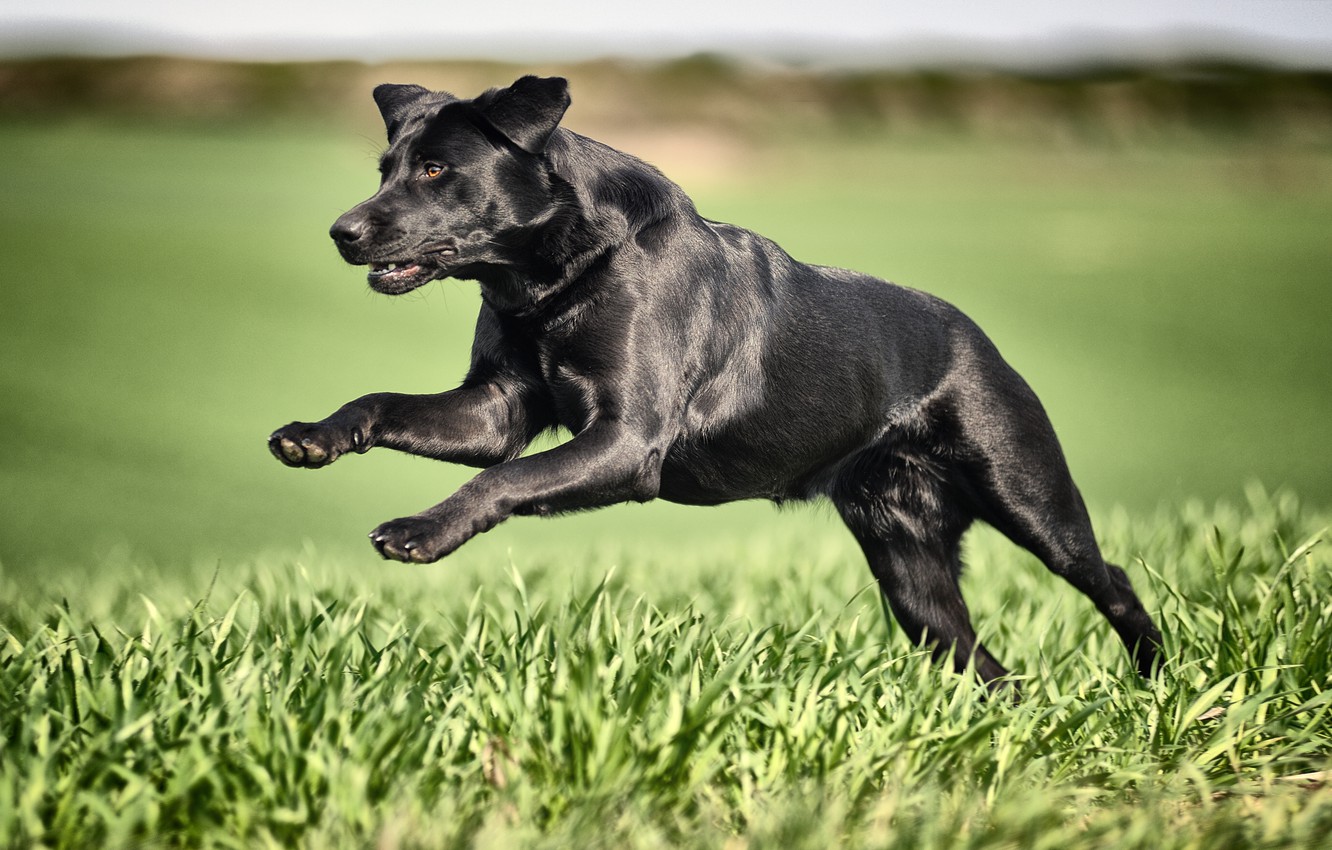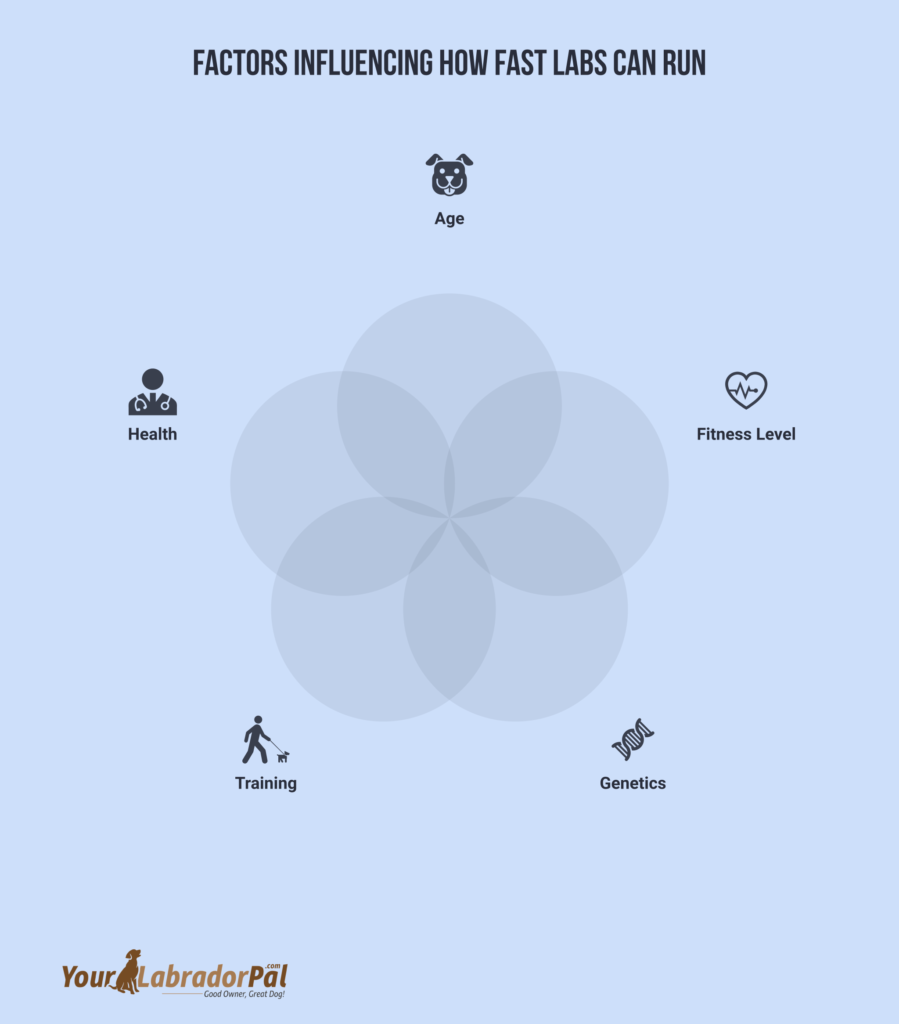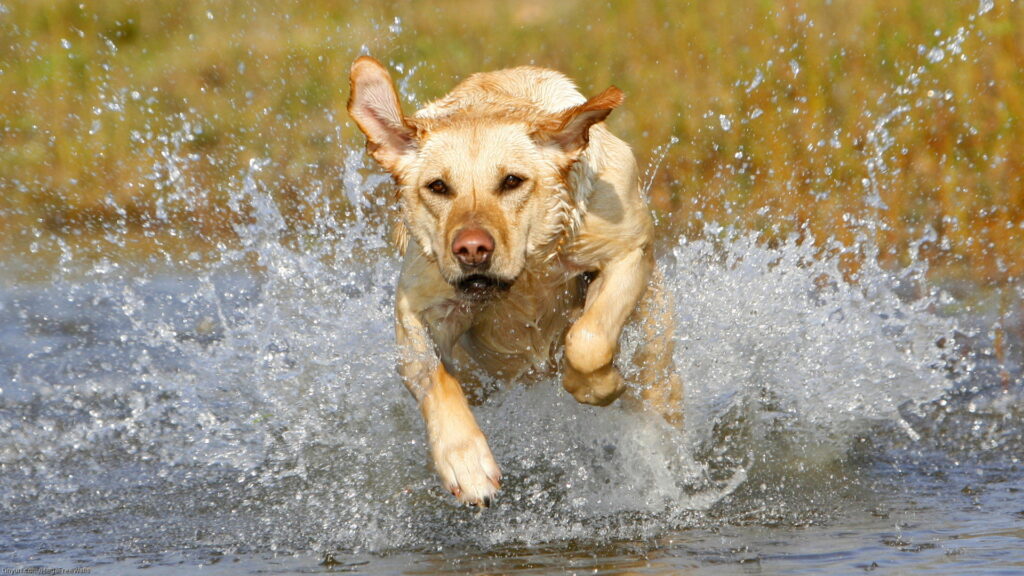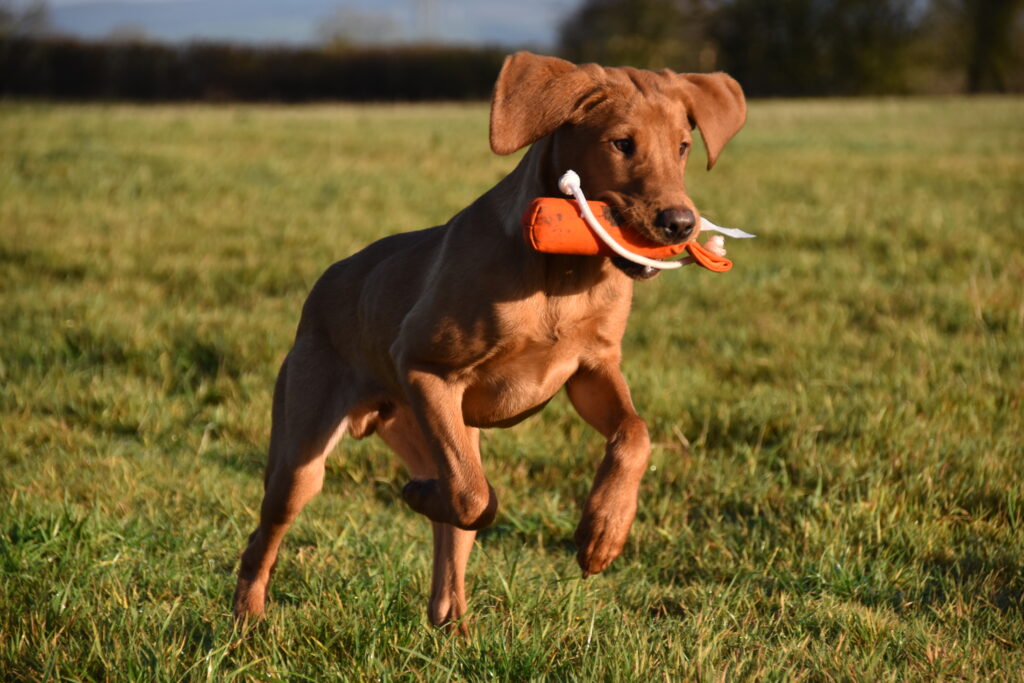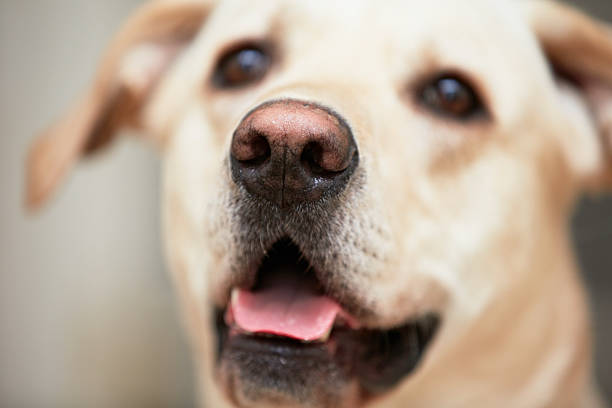Unleashing the Speed: How Fast Can a Labrador Retriever Run?
Have you ever asked, “How fast can a Labrador Retriever run?” If so, you’re not alone. As an avid dog enthusiast, I’ve always been curious about the athletic abilities of these lovable companions. Labrador Retrievers have a special place in the hearts of dog lovers worldwide, thanks to their friendly and outgoing personalities. Their popularity is undoubtedly well-deserved, and I’ve enjoyed spending countless hours with these amazing dogs.
Labs are great family pets and are known for their incredible athleticism and agility. Whether it’s playing fetch at the park, swimming in a lake, or joining you on a hike, these energetic dogs are always up for an adventure.
In this article, we’ll explore the top speed of a Labrador Retriever, the factors contributing to their speed, and how to ensure your Lab remains healthy and agile throughout its life. So, let’s dive in and uncover the true potential of these beloved dogs!
The Top Speed of a Labrador Retriever
Before diving into the factors contributing to a Labrador Retriever’s speed, let’s first establish their top speed. Understanding how fast a Lab can run will help put their athletic abilities into perspective and give you a better appreciation for these incredible dogs.
How Fast Can a Labrador Retriever Run?
On average, a healthy adult Labrador Retriever can reach speeds of 20-30 miles per hour (32-48 kilometers per hour). It’s impressive, considering that the average human jogging speed is around 6 miles per hour (9.6 kilometers per hour). I recall watching my friend’s Lab effortlessly sprint across the field after a thrown ball, leaving everyone in awe of its speed and grace.
Of course, individual Labs’ speeds may vary due to age, fitness level, and genetics, which we’ll discuss further in this article. However, it’s safe to say that they are fast dogs, making them a suitable running buddy and well-suited for various activities.
Comparing a Lab’s Speed to Other Activities
To better understand a Labrador Retriever’s running speed, let’s compare it to some other common activities and animals:
Humans: As mentioned earlier, the average jogging speed for humans is about 6 miles per hour (9.6 kilometers per hour). A professional sprinter can reach speeds of up to 23 miles per hour (37 kilometers per hour). Labs can easily outrun the average person and even give some sprinters a run for their money!
Horses: Horses are known for their speed and strength, with thoroughbred racehorses reaching speeds of up to 40 miles per hour (64 kilometers per hour). While a Lab may be unable to keep up with a racehorse, their agility and endurance make them excellent companions for horseback riding adventures.
Other Dog Breeds: Labrador Retrievers are among the fastest dog breeds but not the fastest. Greyhounds, for example, can reach up to 45 miles per hour (72 kilometers per hour). However, Labs still outpace many other breeds and are particularly known for their impressive stamina and endurance.
These comparisons highlight how remarkable a Labrador’s running speed is. With their athletic capabilities, Labs are well-equipped to participate in various activities, from hunting and retrieving to agility competitions and even search-and-rescue missions.
Factors Influencing a Lab’s Speed
Now that we’ve established the impressive running speed of Labradors, it’s crucial to understand the factors that influence their speed. By exploring these factors, we can better appreciate the individual differences between Labs and learn how to help them reach their full potential.
🦮Age
Age plays a significant role in determining a Labrador Retriever’s running speed. Younger Labs, especially those between 1 and 2 years old, tend to be faster than their older counterparts. At this age, they’ve typically reached their peak physical development, allowing them to run faster.
As Labs grow older, their joints may become less flexible, and their muscles might lose strength, resulting in decreased running speed. I’ve observed this in my friend’s Lab, who, despite being a bit slower now at eight years old, still loves to chase after balls and play with other dogs. Adjusting your expectations and exercise routines as your Lab ages to ensure they remain healthy and happy is essential.
🦮Fitness Level
A Labrador Retriever’s fitness level is another crucial factor influencing its running speed. A well-exercised Lab with strong muscles and good cardiovascular health will generally be faster than an out-of-shape or overweight Lab.
For example, my neighbor’s Labrador, Max, is an energetic dog who runs daily with his owner. His lean body and strong legs allow him to sprint effortlessly across the park. In contrast, another Lab I encountered was overweight and visibly struggled to keep pace with its owner during a leisurely walk.
Regular exercise is vital to maintaining a Lab’s fitness level and ensuring they can run at their top speed. Walking, swimming, and fetching are excellent options for keeping your furry companion in shape. In addition, providing a well-balanced diet and monitoring your Lab’s weight will further contribute to their overall fitness and speed.
🦮Genetics
Genetics can significantly influence the running speed of a Labrador Retriever. Some Labs are naturally faster than others due to their genetic makeup. For example, Labs bred specifically for fieldwork, such as hunting and retrieving, may exhibit greater speed and endurance than those bred primarily as pets or show dogs.
Field-bred Labs often have leaner bodies, longer legs, and a more streamlined build, contributing to their running speed. On the other hand, show-bred Labs may have a stockier build, making them slightly slower runners. It’s essential to understand that while genetics play a crucial role in determining a Lab’s natural running speed, proper training and care can help enhance their overall athleticism.
🦮Training
Proper training can significantly impact a Labrador Retriever’s running speed by building muscle strength, increasing stamina, and enhancing coordination. Training activities such as agility courses, fetch, and even treadmill exercises can help improve your Lab’s running abilities.
For instance, my friend enrolled her Lab, Luna, in an agility course where she practiced weaving through poles, jumping over hurdles, and sprinting through tunnels. Over time, Luna’s running speed improved, and she became more agile and coordinated. While it’s essential to recognize that genetics may limit a Lab’s maximum potential speed, consistent training can help them reach their personal best.
🦮Health
A Labrador Retriever’s overall health can also significantly impact its ability to run fast. Medical conditions such as hip dysplasia, arthritis, or obesity can hinder a Lab’s running speed and cause discomfort or pain during exercise.
For example, a friend’s Lab named Molly was diagnosed with hip dysplasia at a young age. This condition made it difficult for her to run fast without experiencing pain. With the guidance of a veterinarian, Molly’s owner managed her condition through weight management, low-impact exercises, and medication.
It’s crucial to monitor your Lab’s health and address any issues affecting its running ability. Regular veterinary checkups can help identify potential problems early on, allowing you to take the necessary steps to ensure your Lab remains healthy and agile.
Keeping Your Labrador Retriever Healthy and Agile
As a loving Labrador Retriever owner, you want to ensure your furry companion stays healthy and agile throughout life.
🤎Regular Exercise
Labradors are active and high-energy breeds requiring regular exercise to stay healthy and prevent obesity. A lack of exercise can lead to weight gain, joint problems, and behavioral issues. Here are some exercise ideas to keep your Labrador happy and healthy:
- Daily walks: Aim for at least two 30-minute walks per day. It will help your Labrador burn off energy and provide mental stimulation and socialization opportunities.
- Fetch: Labradors love to play fetch, so grab a ball or a frisbee and head to your local park or backyard for a fun game.
- Swimming: Many Labradors enjoy swimming, making it an excellent low-impact exercise option, especially for older dogs or those with joint issues.
- Agility training: Enroll your Labrador in agility classes or set up an agility course in your backyard to challenge their physical and mental abilities.
🤎
Proper Nutrition
A well-balanced diet is crucial for maintaining your Labrador’s overall health and energy levels. Keep these tips in mind when choosing the right food for your furry friend:
- High-quality dog food: Opt for a high-quality, age-appropriate dog food that meets the nutritional needs of your Labrador.
- Portion control: Labradors are prone to obesity, so monitoring their food intake and adjusting portions based on their activity levels and age is essential.
- Healthy treats: Choose low-calorie, nutritious treats for training and rewarding good behavior. Avoid feeding your Labrador table scraps or human foods that can harm their health.
- Regular checkups: Consult your veterinarian regularly to ensure your Labrador maintains a healthy weight and receives the proper nutrients in their diet.
🤎Maintain a Healthy Weight
Maintaining a healthy weight is one of the most important aspects of keeping your Labrador Retriever healthy and agile. Labs are prone to obesity, leading to various health issues like diabetes, joint problems, and heart disease.
To help your Labrador maintain a healthy weight, feed them high-quality dog food that meets their nutritional needs. Make sure to measure their food portions according to the recommended guidelines on the packaging or as advised by your veterinarian. Don’t forget to keep him stay hydrated.
Incorporate regular exercise into your Lab’s daily routine. It could include long walks, playing fetch, or swimming, which most Labs love! Aim for at least 30 minutes daily to help them burn off excess calories and stay fit.
Monitor your Labrador’s weight regularly by conducting a “rib check.” Gently touch their sides and you should feel their ribs without pressing them very hard. If you can’t feel their ribs or see a noticeable waistline, it may be time to reduce their food intake and increase their exercise regimen.
🤎Routine Vet Checkups
Routine vet checkups are essential for keeping your Labrador Retriever healthy and agile. Regular visits to the vet will help identify any potential health concerns early on, allowing for timely intervention and treatment.
Aim to schedule a checkup for your Lab at least once a year or more often if they’re senior dogs or have existing health conditions. During these visits, your veterinarian will conduct a thorough physical examination, checking for signs of illness or injury. They may also recommend vaccinations, blood tests, or other preventive measures to keep your dog in tip-top shape.
Early detection and intervention are critical for your Labrador’s long-term health and well-being. By being proactive about their weight management and scheduling routine vet checkups, your furry friend will be up for a lifetime of happiness and good health.
Training Tips to Help Get Your Lab Up to Speed
If you are a proud owner of a Labrador Retriever, you already know how much they’re good running companions. Labradors are natural sprinters and love to stay active. However, even the most energetic Labradors may need help to improve their speed. So, as a pet parent, you must ensure that your furry pal stays healthy and active.
📌Start with a Warm-Up
Like humans, dogs must also warm up before strenuous physical activities. Starting with a warm-up helps prevent injuries by gradually increasing your Lab’s heart rate, promoting blood flow to their muscles, and improving their flexibility.
Example Warm-Up Routine:
- Begin with a 5-10 minute walk or slow jog. It helps to gently increase your dog’s heart rate and prepares its muscles for more intense exercise.
- Follow the walk or jog with dynamic stretches, such as leg lifts, circles, and bends. These movements will help improve your Lab’s range of motion and flexibility.
- Finish the warm-up with a few short sprints or playtime, like a game of fetch. This final step helps to activate your dog’s fast-twitch muscle fibers, priming them for faster running.
Remember to always watch your Labrador’s body language during the warm-up. If you notice any signs of discomfort or pain, stop immediately, and consult with your veterinarian.
📌Incorporate Interval Training
Interval training is highly effective in improving your Lab’s speed and endurance. This type of training involves alternating between periods of high-intensity exercise and periods of lower-intensity exercise or rest. This intensity variation helps challenge your dog’s cardiovascular system, ultimately increasing its overall fitness.
Example Interval Training Routine:
- After completing a warm-up, start with a high-intensity sprint for 30 seconds to 1 minute. Encourage your Lab to run at its fastest pace during this time.
- Follow the sprint with a lower-intensity recovery period, such as walking or slow jogging for 1-2 minutes. It lets your dog catch their breath and recover before the next high-intensity interval.
- Repeat this cycle of high-intensity sprints and low-intensity recovery periods for 5-10 rounds, depending on your dog’s fitness level and experience.
- Finish the workout with a cool-down, a 5-10 minute walk, and gentle stretching.
Remember that every dog is different, so it’s essential to personalize the interval training routine based on your Labrador’s unique needs and abilities. Start with shorter intervals and gradually increase the duration and intensity as your dog becomes more comfortable and fit.
📌Practice Fetching Games
Fetching games are a fun and engaging way to exercise your Labrador Retriever and an excellent opportunity to improve their speed. Labs are instinctive to retrieve, making fetching games a perfect choice for incorporating into their training routine.
Example Fetching Games:
- Classic Fetch: Using a ball or a favorite toy, throw it as far as possible and encourage your Lab to retrieve it at full speed. It helps build their sprinting abilities and provides a fun and interactive workout session.
- Frisbee Fetch: Introduce a frisbee into your fetching games to add variety and further challenge your dog’s speed and agility. The unpredictable flight path of a frisbee will keep your Lab on its toes and help improve its reaction time.
- Water Fetch: If your Labrador enjoys swimming, try incorporating fetching games in the water. Throwing a floating toy into the water challenges your dog to swim quickly and efficiently, building its overall strength and endurance.
Always monitor your Lab’s energy levels during fetching games and give them breaks as needed. Over time, you’ll likely notice improvements in their speed, agility, and overall fitness.
📌Add Strength Training
Strength training exercises can help improve your Labrador Retriever’s muscle tone, power, and overall performance. By incorporating strength training into your dog’s exercise routine, you’ll boost their speed and reduce the risk of injuries.
Example Strength Training Exercises:
- Hill Sprints: Find a moderately steep hill and encourage your Lab to sprint up the incline. Hill sprints help develop leg muscle strength and power, contributing to increased running speed.
- Weighted Walks: Use a dog-specific weighted vest to add resistance to your Labrador’s walks or jogs. Start with a light weight and gradually increase as your dog becomes stronger and more comfortable. This exercise helps improve overall muscle strength and endurance.
- Tug-of-War: Engage in a game of tug-of-war with your Lab using a sturdy rope toy. This activity challenges your dog’s upper body and core strength, which can contribute to improved distance running performance.
Always consult your veterinarian before introducing strength training exercises to ensure they are appropriate for your dog’s age, health, and fitness level.
📌Don’t Forget to Cool Down: Promote Recovery and Flexibility
A proper cool-down is as important as a warm-up regarding your Labrador Retriever’s exercise routine. Cooling down helps to gradually return your dog’s heart rate to normal, promotes muscle recovery, and maintains flexibility.
Example Cool-Down Routine:
- Begin the cool-down with a 5-10 minute walk or slow jog. It helps lower your dog’s heart rate and allows its muscles to recover from the workout.
- Follow the walk or jog with some gentle static stretches. Focus on your Lab’s major muscle groups, such as the hamstrings, hips, and shoulders. Hold each stretch for 15-30 seconds, and be mindful of your dog’s comfort level.
- End the cool-down with a massage or brushing session. It helps to further relax your dog’s muscles and provides an opportunity to check for any injuries or sore spots.
Frequently Asked Questions
Q: How does a Labrador Retriever’s speed compare to other dog breeds?
A: Labs are considered fast runners but not the fastest. Greyhounds, for example, can reach up to 45 miles per hour (72 kilometers per hour). However, Labs are still faster than many other breeds and are known for their impressive stamina and endurance.
Q: At what age do Labs reach their maximum running speed?
A: According to research, Labs tend to hit their top speed at around one to two years of age. Of course, this can vary depending on their size, health, and training. But on the whole, you can expect your Labrador puppy to be at its peak performance when it hits the ripe old age of two. So, if you’re looking for a running partner, consider this: once they get going, they’ll be hard to keep up with!
Q: Can I train my Lab to run faster?
A: While genetics play a significant role in a Lab’s natural running speed, proper training can help improve their overall athleticism, endurance, and coordination. It may result in a slightly faster running speed.
Q: How far can a Labrador Retriever run?
A: Labs are known for their endurance, and they can run long distances with proper conditioning. However, the distance will depend on age, fitness level, and overall health. Always monitor your Lab for signs of fatigue or discomfort during exercise and adjust the intensity and duration accordingly.
Final Words
Labrador Retrievers are truly remarkable dogs, known not only for their friendly and loving nature but also for their impressive athleticism. Their ability to run at 20-30 miles per hour showcases their agility and endurance, making them perfect companions for outdoor adventures. Understanding the factors influencing a Lab’s speed, such as age, fitness level, genetics, training, and health, allows us to better appreciate their abilities and ensure they remain happy and healthy throughout their lives.
As a fellow dog lover, I encourage you to take the time to help your Lab reach its full potential by providing regular exercise, proper nutrition, and consistent training. In doing so, you’ll have a fast-running companion and a loyal friend who will be by your side for years to come. So, let’s celebrate the amazing athletic abilities of Labradors and continue to support them on their journeys.
I’d love to hear your thoughts and experiences with Labradors and their running speed. Please feel free to comment below, and let’s start a conversation about these incredible dogs!

